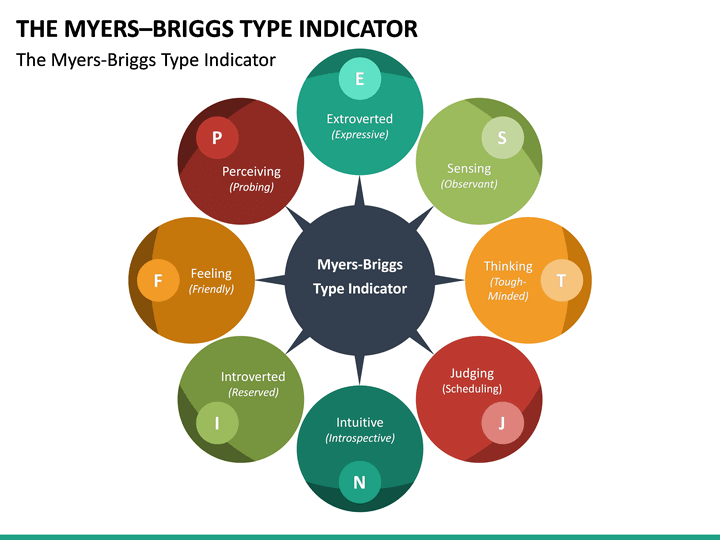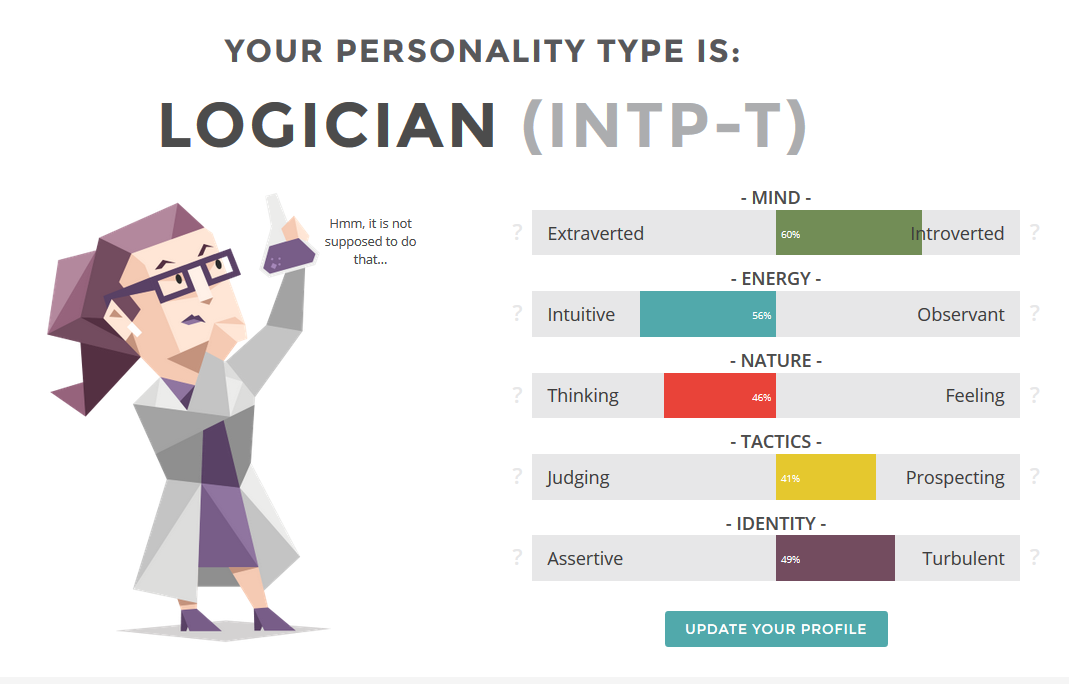

Taking the Myers-Briggs Type Indicator can provide a lot of insight into your personality, which is probably why the instrument has become so enormously popular. The judging-perceiving scale helps describe whether you extravert when you are taking in new information (sensing and intuiting) or when you are making decisions (thinking and feeling).Įach type is then listed by its four letter code: ISTJ Remember, all people at least spend some time extraverting. These two tendencies interact with the other scales. People who lean toward perceiving are more open, flexible and adaptable. Those who lean toward judging prefer structure and firm decisions.

Instead, its goal is simply to help you learn more about yourself. It isn’t a tool designed to look for dysfunction or abnormality. No one personality type is “best” or “better” than any other one. The goal of the MBTI is to allow respondents to further explore and understand their own personalities including their likes, dislikes, strengths, weaknesses, possible career preferences, and compatibility with other people. Overview of the Myers-Briggs testīased on the answers to the questions on the inventory, people are identified as having one of 16 personality types.

They continued to fully develop the instrument over the next two decades. Myers created the first pen-and-pencil version of the inventory during the 1940s, and the two women began testing the assessment on friends and family. By helping people understand themselves, Myers and Briggs believed that they could help people select occupations that were best suited to their personality types and lead healthier, happier lives. During World War II, Myers and Briggs began researching and developing an indicator that could be utilized to help understand individual differences.

The development of the Myers-Briggs testīoth Isabel Myers and her mother Katherine were fascinated by Jung’s theory of psychological types and recognized that the theory could have real world applications. Today, the inventory is one of the most widely used psychological instruments in the world. The questionnaire was developed by Isabel Myers and her mother Katherine Briggs based on their work with Carl Jung’s theory of personality types. The Myers-Briggs Personality Type Indicator (MBTI) is a self-inventory designed to identify a person’s personality type, strengths, and preferences. … a core concept in Leadership Skills and Atlas109 Concept description


 0 kommentar(er)
0 kommentar(er)
